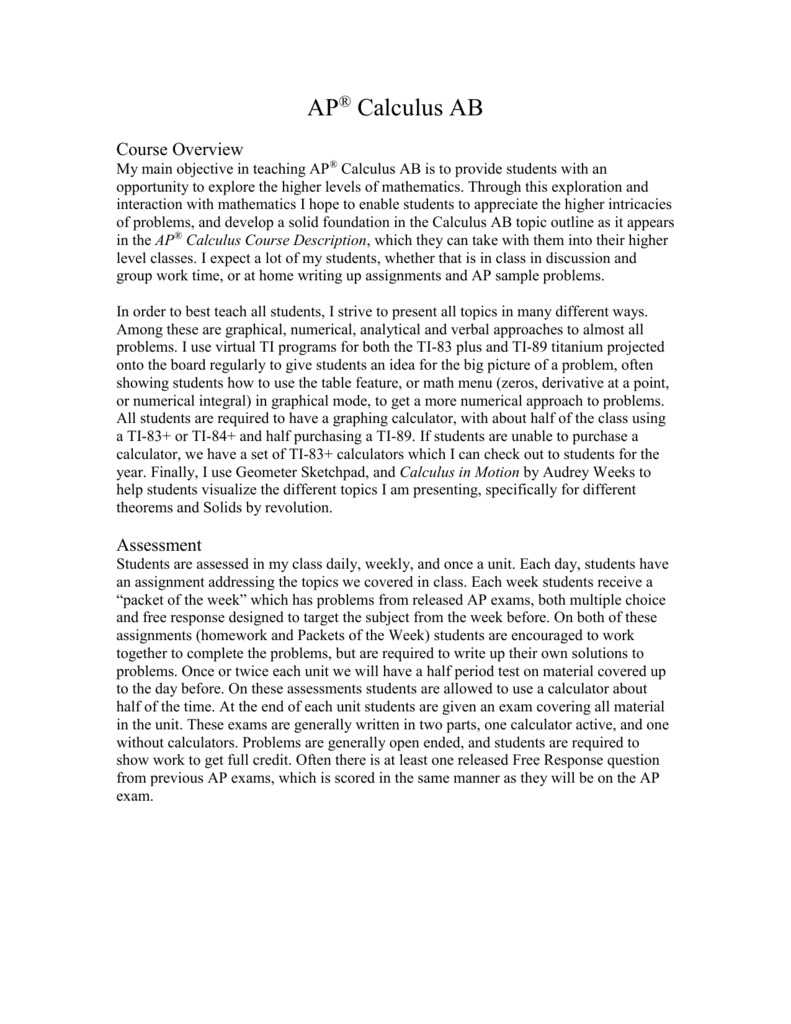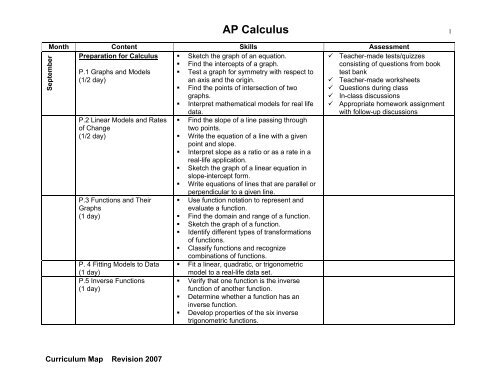Review 9ap Calculus
Calculus is a method for studying rates of change of functions. Because we often represent functions by their graphs, you could say that calculus is all about the analysis of graphs. We will review the main topics that you’ll need to know for the AP Calculus exams. AP Calculus BC Chapter 9 Practice Test Multiple Choice Identify the choice that best completes the statement or answers the question. Identify the most appropriate test to be used to determine whether the series 11( )−1 n +1 n n = 1 ∞ ∑ converges or diverges. AlternatingSeries Test c. Ρ-Series Test e.
- Review 9ap Calculus Definition
- Review 9ap Calculus Test
- Review 9ap Calculus 2
- Review 9ap Calculus Calculator

- A: If the graph of a function has a sharp point, the function is not differentiable at that point.This is because the slopes directly to the left and right of the point do not approach the same value.
- 9 AP Calculus Review Applications #3 Name Calculator DatePd. Grass clippings are placed in a bin, where they decompose. For 0ddt, the amount of grass clippings remaining in the bin is modeled by At) t, where At is measured in pounds and t is measured in days.
Test your readiness for the AP Calculus exam with this quiz!
Answer 1
A: If the graph of a function has a sharp point, the function is not differentiable at that point. This is because the slopes directly to the left and right of the point do not approach the same value.
An absolute value function has a sharp point at its vertex. The graph off(x)=|x + 4| is a horizontal translation (to the left 4 units) of the standard absolute value function, y =|x|, which has vertex (0, 0). Thus, the vertex of fis (-4, 0), which means the function is not differentiable at x =-4. Choice (A) is correct.
Answer 2
D: The only discontinuities that are removable are holes and holes with a point above or below—this function has neither. The function has 2 jump discontinuities (gaps), at x=-2 and x= 0, but neither of these is removable.
Answer 3
D: Examine the values in the table: f(x) increases as x gets larger, which indicates that f′(x), the slope of the function, is positive. This means f′(x)> 0, so eliminate (A) and (B).
To choose between (C) and (D), take a closer look at the slopes. The slope between the first pair of points is 3, and the slope between the second pair of points is also 3, so f′(x) is constant. This means f′′(x), which is the derivative of f′(x), must be 0. Choice (D) is correct
Review 9ap Calculus Definition
Answer 4

C: To use a local linear approximation, you need to find the equation of the tangent line. You’ve been given all the information you need in the question stem; you just need to piece it all together. The point on the function is given by f(-1)= 5, which translates to the point (-1, 5). The slope of the tangent line at x=-1 is given by f'(-1)= 2, so the slope is 2. Now the point-slope form of the tangent line is:
y-5 = 2(x-(-1))
y = 5+2(x+1)
Substituting x=-0.9 into the equation of the tangent line yields:
5+2(-0.9+1) = 5+2(0.1) = 5.2

That’s (C).
Review 9ap Calculus Test
For more practice questions, check out our AP Calculus Prep Plus book.
Review 9ap Calculus 2

Review 9ap Calculus Calculator
AP Calculus BC > Unit 9: Sequences & Series
|
